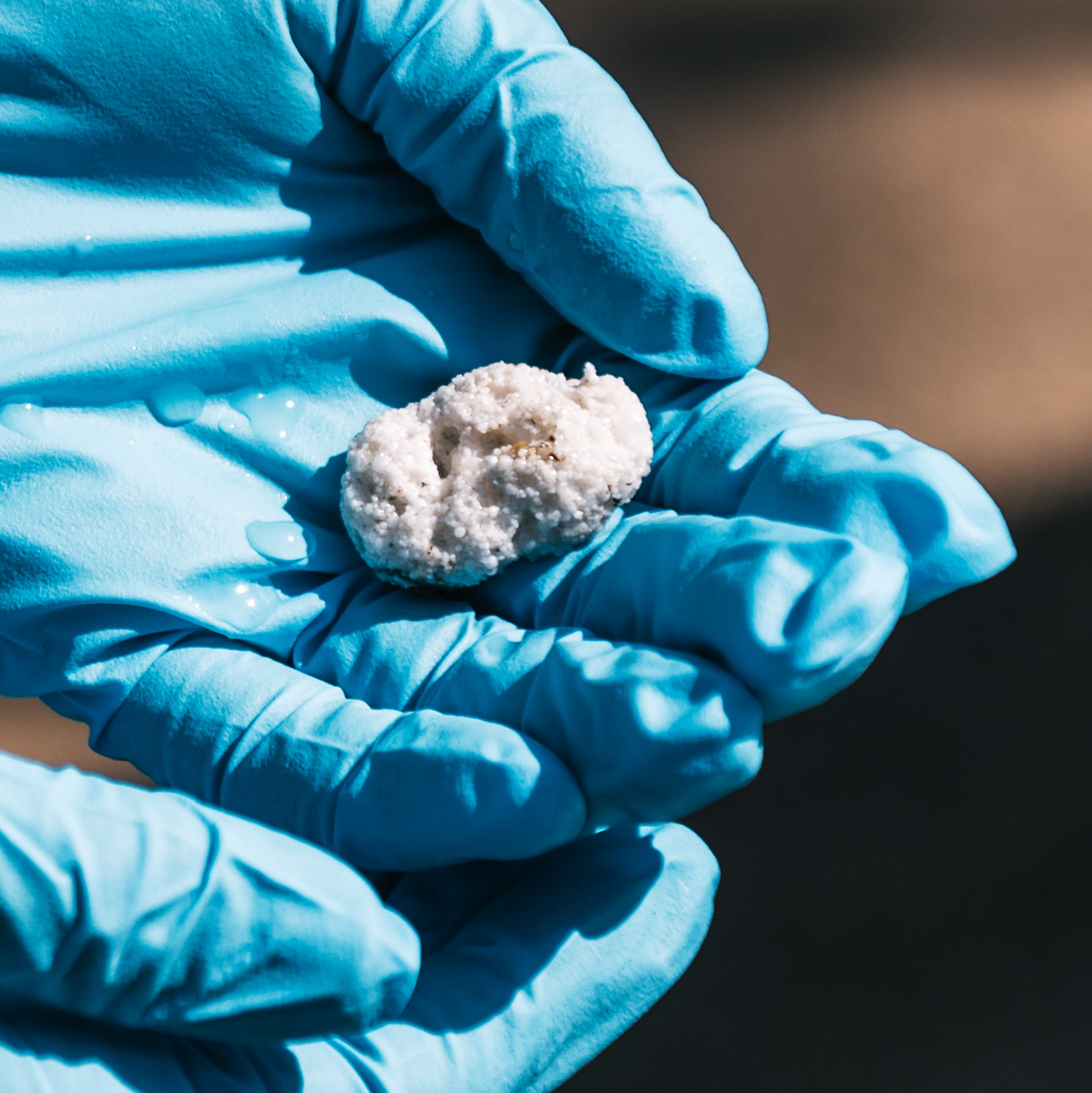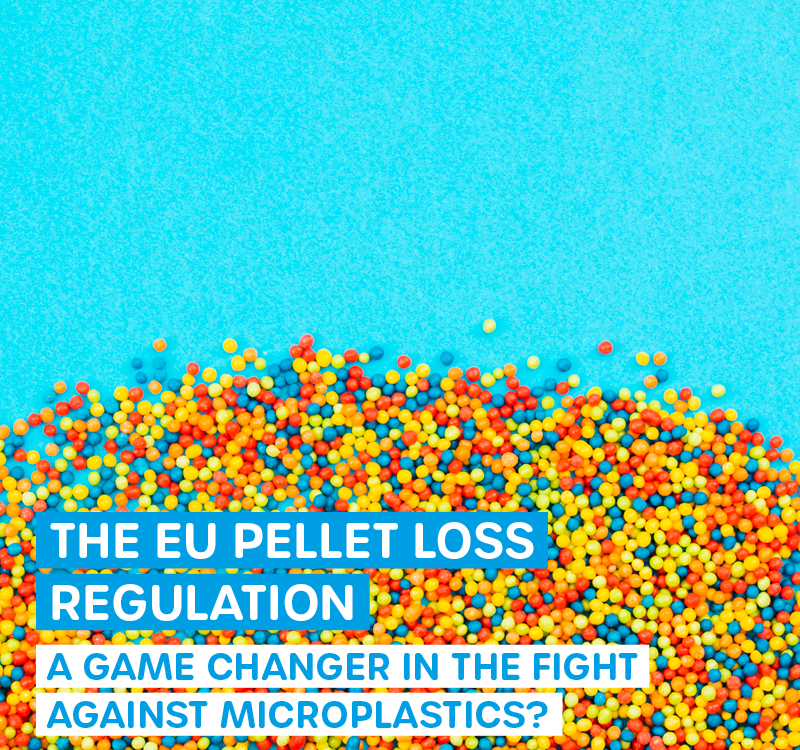
The Microplastics Fate Paradox
7. July 2025
Microplastics regulation
10. July 2025SPIONs and magnetization: Why "smart rust" could exacerbate the microplastic problem
This article is based on a critical analysis of current scientific literature on magnetic nanoparticles in microplastic separation and their potential environmental impact. The assessment takes into account the precautionary principle and ecological system complexity.
In the scientific world, some solutions sound too good to be true - and this is precisely the case with the current hype surrounding magnetic nanoparticles for microplastic separation. Researchers at Friedrich-Alexander-Universität (FAU) Erlangen-Nürnberg are touting their SuperParamagnetic Iron Oxide Nanoparticles (SPIONs) as a revolutionary "intelligent rust", while Irish inventor Fionn Ferreira is collecting international awards with his ferrofluid approach. But a critical look at these technologies reveals disturbing parallels with historical environmental disasters in which supposed solutions became bigger problems.
SPIONs: When the solution becomes a problem
FAU researchers have developed specially coated iron oxide nanoparticles with a diameter of around 30 nm that selectively bind to plastic surfaces and clump them together to form larger aggregates that can then be removed magnetically. The technology promises an elegant solution: microplastics are captured by even smaller particles and pulled out of the water.
The toxicological time bomb
What the proponents like to conceal is the fundamental irony of this method: nanoplastics are probably much more dangerous to living organisms than microplastics, as they are more reactive, more abundant and able to reach more remote locations and penetrate living cells. Using nanoparticles to combat microplastic pollution means nothing more than introducing even smaller and potentially more dangerous particles into the environment.
Critical facts on nanotoxicity:
- Nano- and microplastics can induce apoptosis in cells and have genotoxic and cytotoxic effects
- They cause inflammation, oxidative stress, lipid metabolism disorders, gut microbiota dysbiosis and neurotoxicity
- MNPs exposure can cause oxidative stress, cytotoxicity and disruption of internal barriers such as the intestinal, air-blood and placental barriers
Fionn Ferreira's ferrofluid: youthful optimism meets scientific reality or: the media hype surrounding an immature technology
Irish teenager Fionn Ferreira developed a technique for separating microplastics by combining vegetable oil and rust powder to create a ferrofluid that, according to his own statements, achieved an 87% success rate for particles smaller than 2 mm in over 1,000 tests. The young inventor's story has attracted worldwide media attention and earned him 50,000 dollars at the Google Science Fair.
The inconvenient scientific truths
What has been lost in the media coverage are the fundamental limitations of the technology. Ferreira himself admits: "Microplastics are so extensive that it is impossible for a consumer to solve them". His lab results don't easily translate to real-world environmental conditions, and the 13% failure rate under controlled conditions points to even bigger problems with more complex water matrices.
The scaling trap: when laboratory successes become environmental disasters
As the FAU researchers themselves admit: "no technical process is suitable for cleaning micro- and nanoplastics from the entire 1.4 billion km³ of water on Earth". This honest statement exposes the discrepancy between laboratory successes and practical applicability.
Calculating the ecological impact: If magnetic nanoparticles were used on an industrial scale, a new category of environmental pollution would emerge. With a hypothetical treatment of only 1% of global wastewater, millions of tons of magnetic nanoparticles would be released into the environment every year - with completely unknown long-term consequences.
Incomplete recovery as a systemic problem
Although magnetic processes remove 92% of microplastic particles from seawater, some of the magnetic nanoparticles remain in the system. This incomplete recovery leads to a continuous accumulation of iron oxide nanoparticles in aquatic systems.
Biodiversity risks: The underestimated threat to ecosystems or: nanoparticles as a disruptive factor in the food chain
Magnetic nanoparticles are small enough to cross the blood-brain barrier and accumulate in various organs. In aquatic ecosystems they can:
- Affect phytoplankton: As the basis of the marine food chain, microalgae are particularly sensitive to nanoparticles
- Promote bioaccumulation: Microplastics bioaccumulate - if a fish eats a piece of plastic and a larger fish eats that fish, the plastic is passed through the food chain
- Disrupt microbial communities: Magnetic nanoparticles can disrupt bacterial cycles essential to ecosystems
Unlike microplastics, which float on the water surface, sink slowly or quickly depending on the composition of the polymer mixture, magnetic nanoparticles tend to accumulate in sediments. This creates long-term sources of contamination that can have harmful effects for decades.
Size selectivity: The failure with the most dangerous particles or: The inefficiency with sub-µ particles
The results of the laboratory tests provided specific removal rates. These vary between 54% and 94% for different polymer types, with the smallest particles - precisely those considered to be particularly hazardous to health - often not being removed.
This leads to the paradoxical result that the more harmless, larger particles are removed, while the more toxic nanoplastics remain in the system.
In addition, the much-cited laboratory studies mostly use isolated microplastic particles in distilled water. However, real wastewater contains complex mixtures of organic and inorganic particles that significantly impair the selectivity of magnetic methods. The researchers have not yet commented on this.
The economic realities: cost explosion of scaling
The production of functionalized magnetic nanoparticles requires:
- High purity starting materials
- Precise synthesis conditions
- Complex surface modification
- Quality control at nanometer level
These factors lead to production costs that make large-scale application economically unrealistic.
Infrastructure and maintenance costs
Magnetic separation systems require:
- Strong permanent magnets or electromagnets
- Continuous cleaning of the magnetic systems
- Special handling equipment for nanoparticles
- Complex safety measures for worker protection
Clump & Skim: The real alternative to magnetic illusions
Paradigm shift from nanoparticles to macroscopic agglomeration
While magnetic processes try to solve the problem by using even smaller particles, our Wasser 3.0 PE-X® technologytakes the opposite approach: non-toxic hybrid silica gels clump microplastic particles together to form larger agglomerates that can be skimmed off the surface of the water without filters.

Wasser 3.0 PE-X® Technology © Wasser 3.0

Microplastic Agglomerates after the Clump and Skim Process © Wasser 3.0
Superior environmental compatibility and real ROI
- No secondary contamination: Unlike magnetic nanoparticles, the hybrid silica gels leave no toxic residues in the treated water.
- Selectivity without size limitation: The technology leads to an average reduction of 86 ± 2% in micropollutants and 61 ± 28% in microplastics, regardless of particle size.
- True circular economy instead of problem displacement: 100% of the removed waste can be reused, with the agglomerates serving as substitutes for insulation and construction materials. This is in sharp contrast to magnetic processes that create new waste streams.
- Economic superiority: The system requires 20% lower capital costs and up to 75% lower operating costs compared to traditional membrane filtration or hydro-cyclone systems. This cost efficiency makes large-scale implementation realistic.
And finally, a few pointers to regulatory blind spots: Lack of nanoparticle regulation
While microplastics are increasingly regulated, there are hardly any regulations for the deliberate introduction of magnetic nanoparticles into water bodies. This regulatory gap allows untested technologies to be marketed as "solutions".
The precautionary principle ignored
The burden of proof for the safety of magnetic nanoparticles should lie with the proponents, not the critics. The effects of nano- and microplastics on health in the early stages of life are not yet fully understood, yet more nanoparticles are being introduced into the environment.
Historical parallels: Lessons from past "miracle solutions"
DDT: The pesticide parallel
Just as DDT was once praised as a miracle cure for insects, magnetic nanoparticles are now being marketed as a solution for microplastics. In both cases, long-term effects were ignored and the complexity of ecological systems underestimated.
Asbestos and the nanotechnology warning: The history of asbestos shows how "safe" nanomaterials were later recognized as highly dangerous. The structural similarities between asbestos fibers and certain nanoparticles should be a cautionary tale.
Scientific integrity versus media spectacle or: the bias of success stories
Media reports on Fionn Ferreira's success at the Google Science Fair rarely mention the fundamental limitations of his technology. This selective reporting damages the scientific debate and leads to unrealistic expectations.
Peer review versus marketing
While initial laboratory results may appear promising, there is a lack of systematic long-term studies on the ecological effects of magnetic nanoparticles. The discrepancy between scientific caution and market-driven optimism is worrying.
And finally, the answer to the question: "Why "smart rust" is unintelligent"
The magnetic separation of microplastics by SPIONs and similar technologies represents a fundamental error in thinking about how to deal with environmental pollution. Instead of addressing the causes of the problem or developing real solutions, a new, potentially more dangerous problem is being created.
The core problem lies in four areas:
- Nanotoxicological risks: The deliberate introduction of millions of tons of magnetic nanoparticles into the environment could have more devastating long-term effects than the original microplastic problem.
- Illusion of scale: What works in the laboratory is not automatically transferable to global ecosystems. The sheer quantity of nanoparticles required makes global application unrealistic, both ecologically and economically.
- Threat to biodiversity: The impact on complex aquatic food webs is unpredictable and potentially irreversible.
- Regulatory irresponsibility: The introduction of new nanomaterials without comprehensive long-term studies contradicts the precautionary principle.
Real solutions such as the Clump & Skim technology show that it is possible to efficiently remove microplastics without creating new environmental risks. They work on the principle of agglomeration into larger, harmless particles instead of polluting the environment with even smaller, potentially more toxic materials.
The choice between magnetic nanoparticles and sustainable agglomeration technologies is not just a technical decision, but an ethical one about the kind of world we want to leave to future generations. "Smart rust" may be scientifically fascinating - but it is definitely not smart for our environment.






